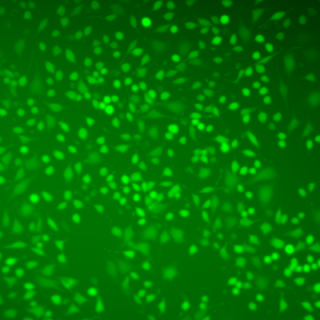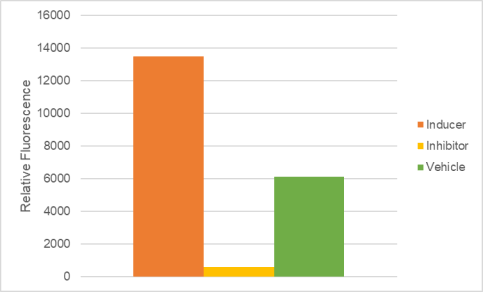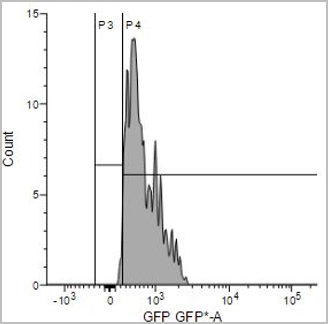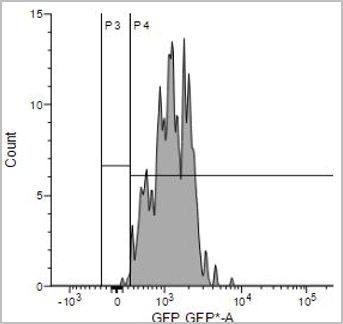Maintenance Notice (5:15 AM - 4:55 PM May 24, 2025): This website is scheduled to be unavailable due to maintenance. We appreciate your patience and understanding.
Published TCIMAIL newest issue No.198
Maximum quantity allowed is 999

Intracellular reactive oxygen species (ROS) are mainly produced in mitochondria. ROS react to lipids or proteins inside cells may inhibit the cell functions and induce a series of pathological processes including cell death, aging and oncogenesis.
The Intracellular Reactive Oxygen Species (ROS) Detection Assay Kit provides a fluorescence probe, DCFH-DA, suitable for immediate detection of ROS. This kit is sufficient for one 96-well microplate assay and requires 1 mL of test solution for 1 × 106 cells/mL. The optimal working concentration of the reaction dye may vary depending on the cell lines being used.


Figure 1. Fluorescence microscopy observation of ROS produced in Hela cells
ROS produced in HeLa cells were observed by fluorescence microscope.


Figure 2. Detection of ROS in NIH-3T3 cells using a plate reader
ROS production was induced by a ROS inducer and inhibited by a ROS inhibitor.


Figure 3. Detection of ROS in NIH-3T3 cells by flow cytometer
ROS production was induced by Erastin treatment.